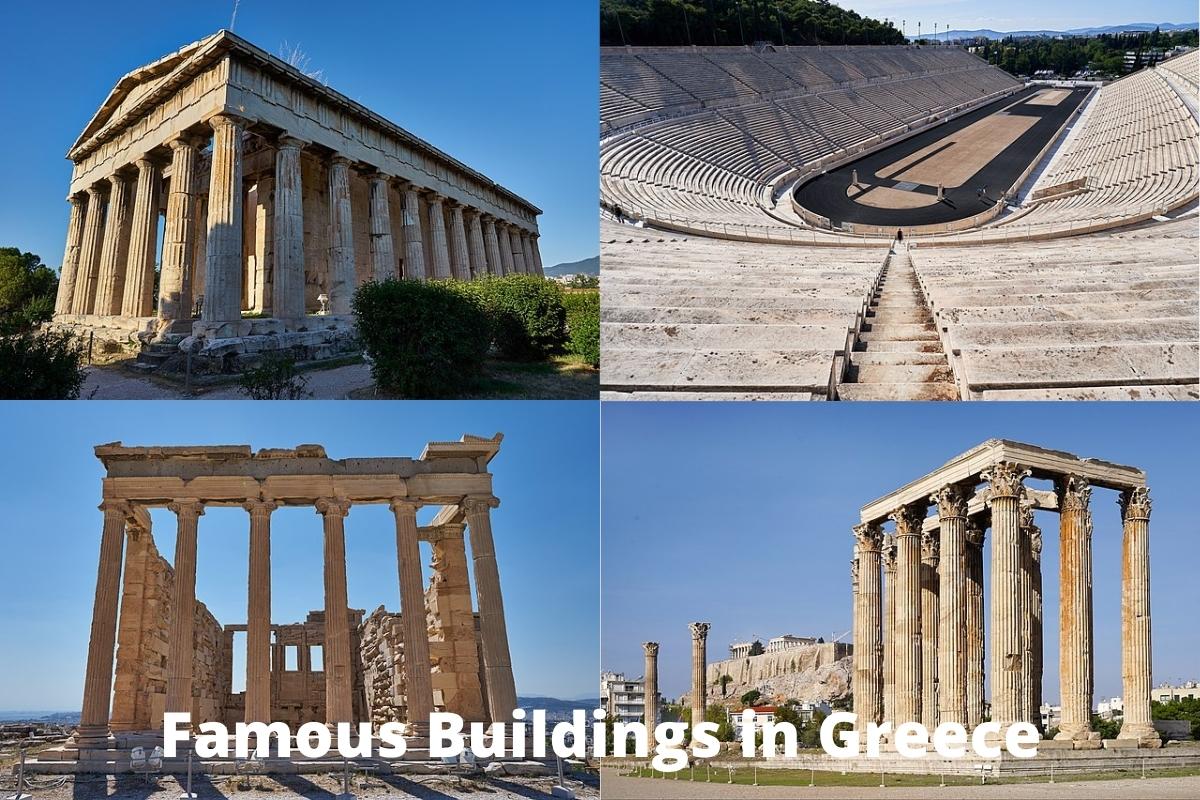Greece attracts tourists from far and wide due to its rich architectural history. Known as the origin of ancient civilization, Greece has the most iconic buildings in the world.
Their designs and construction exhibit great creativity, precision and intellect, the hallmark of Greek architecture and art.
A visit to Greece takes you on a journey of discovering classical architectural styles like Doric, Corinthian, Composite, Ionic, and Tuscan. If it’s the next destination on your bucket list, be sure to visit these 10 famous buildings in Greece.
Famous Buildings in Greece
1. Parthenon

Built between 447 and 432 BC, Parthenon, is one of the most iconic buildings in the world. It served as the main temple for Athenians and was dedicated to the goddess of Athena.
Parthenon was constructed on the remains of the sixth century temple called Hekatompedon.
Persians had destroyed Hekatompedon in 480 BC prompting Athenians to build a larger temple to house the beautiful 12-meter sculpture of Athena made of gold and ivory.
Consequently, they built the magnificent Parthenon temple, which was 70 meters long and 30 meters wide in white marble.
It had a walkway surrounding the edifice with 17 columns on each side and eight columns on the main facades. Parthenon has been destroyed throughout the centuries but is being restored to replicate the ancient temple.
2. Temple of Olympian Zeus
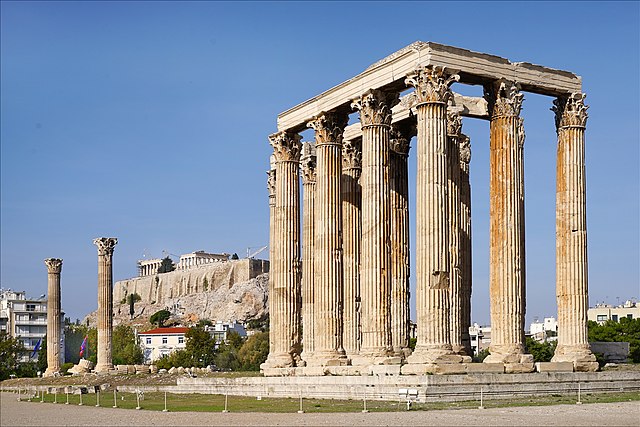
The Olympian Zeus is one of the largest Greek temples constructed during the Hellenistic period. It was built between the 6th Century BC and 2nd Century AD and is an excellent example of the Doric order. The temple paid homage to the King of Gods, called Zeus, marked by the gold and ivory Statue of Zeus.
The Temple of Olympian Zeus consisted of 104 columns, but most of them were destroyed, and others re-used to construct Byzantine temples. Today, the temple has 16 columns left and the ruins of other monuments like Apollo Delphinios Temple.
A walk outside the Temple of Zeus, leads you to Hadrian’s Gate, another iconic landmark in Greece. Athenians constructed this gate in 131-132 AD, in honor of Hadrian, a Roman emperor.
3. Ancient Theatre of Epidaurus
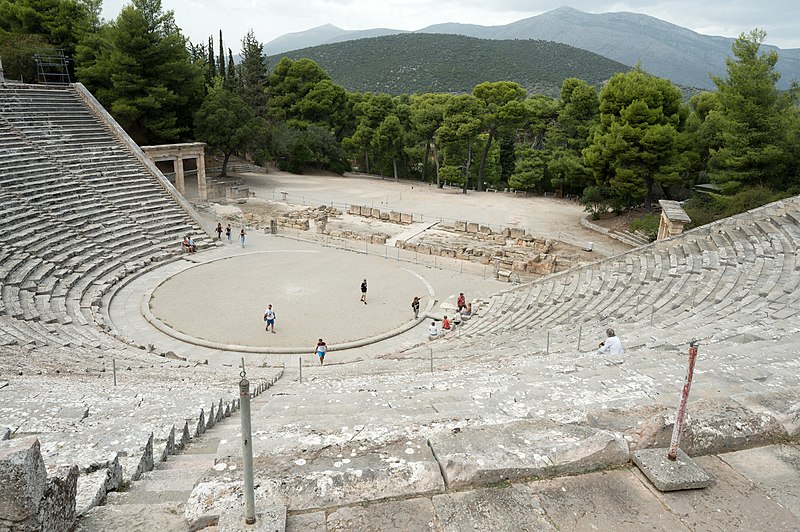
Located in Epidaurus, this theater is another marvel of Greek architecture. It has the most profound sound architecture in terms of acoustics, thanks to its intricate design and construction.
The theater has an orchestra area, an auditorium, and a stage building, large enough to accommodate 13,000-14,000 people in one seating.
During the ancient Greek era, natives would host dramatic games, songs, and music in worship of Asclepius, the god of medicine. The theater was also used to heal patients because it was believed that witnessing staged drama would affect one’s physical and mental health positively.
Since its construction, the theater hasn’t been modified and has retained a distinct Hellenistic architectural style. Today, it attracts large crowds of locals and tourists during the summer period when performances are held at the theater.
4. Stoa of Attalos
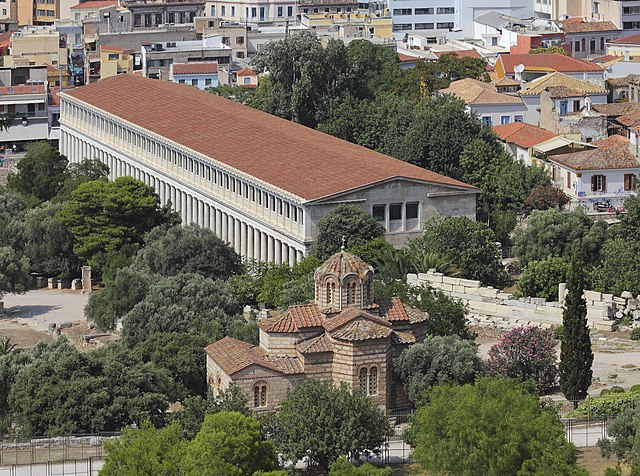
Named after King Attalos II of Pergamon, Stoa of Attalos was constructed to show gratitude to Athenians for the education they had provided.
The closed walkway (stoa) was built during the Hellenistic era, but it was larger and more elaborate than earlier buildings of ancient Athens.
Stoa of Attalos measures 115 by 20 meters and is built using limestone and Pentelic marble. It showcases various Greek architectural styles, including Doric and Ionic. The Doric order was used on the ground floor, while the inner part of the walkway exhibits the ionic style.
Besides being a tourist attraction, Stoa of Attalos has historical significance. It was here that the 2003 Treaty of Accession between the European Union and 10 countries was signed.
5. Temple of Hephaestus
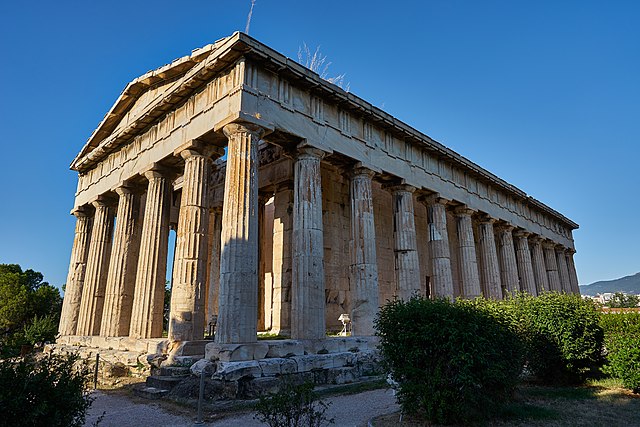
Ancient Greek architecture is best known for its temples. Among them is the temple of Hephaestus. This temple dates back to the 5th century BC – the golden age of Classical Athens.
The temple, located in the Athenian agora, has hexastyle Doric columns. It has friezes above the columns, although natural forces like earthquakes have extensively damaged the friezes.
The temple of Hephaestus was built from Pentelic marble and contains sculptures made of Parian marble. Notably, this temple’s east and west sides are shorter compared to the north and south sides.
The sculptures speak volumes – those on the east depict the labors of Hercules and the battle of Theseus with the Pallentides. The sculptures on the left depict the fall of Troy.
Today, this temple easily passes as one of the most significant monuments in Greece.
6. Palace of the Grand Master of the Knights of Rhodes
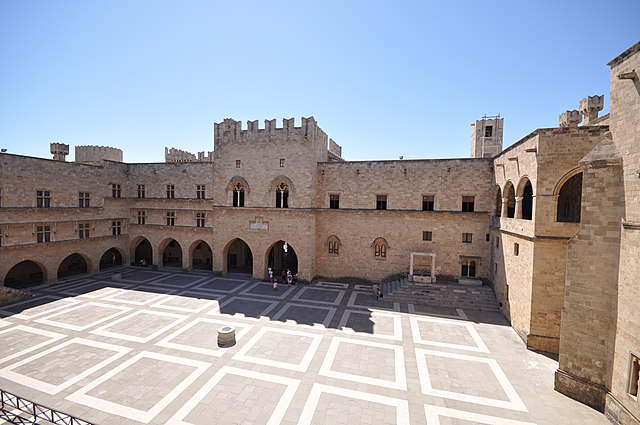
Also known as Castello, the Palace of Grand Master of the Knights of Rhodes is a medieval castle at the end of the Street of the Knights in the Old Town of Rhodes.
Back in the day, this palace was home to the governor and the administrative center. The palace was constructed in the 14th century by the Knights of Saint John.
The palace was built on the foundations of the temple of Sun-god “Helios.” The palace has undergone several modifications throughout the years.
During the Italian rule of Rhodes, an Italian architect, Vittorio Mesturino, did massive restoration works on the palace between 1937 and 1940. After that, the palace became a holiday residence for King Victor Emmanuel III.
It would later become the residence of the Fascist dictator Benito Mussolini. Years later, the palace was converted into a museum, which it is to date.
7. Erechtheion
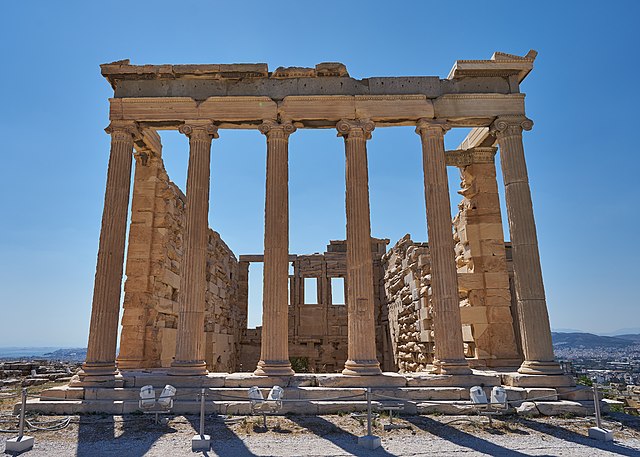
This is another iconic temple dedicated to Poseidon and Athena. It was built between 421 and 406 BC by Mnesicles, a renowned architect and Phidians, who also worked on Parthenon as a sculptor and mason.
Its name originates from a shrine dedicated to a Greek hero and king of Athens called Erichthonius.
Erechtheion is believed to have replaced Peisistratid temple, in Athena Polis, which was destroyed in 480 BC by Persians.
The temple had carved doorways and decorated columns and was constructed from black marble from Eleusis and marble from Mt. Pentelikon.
8. Panathenaic Stadium
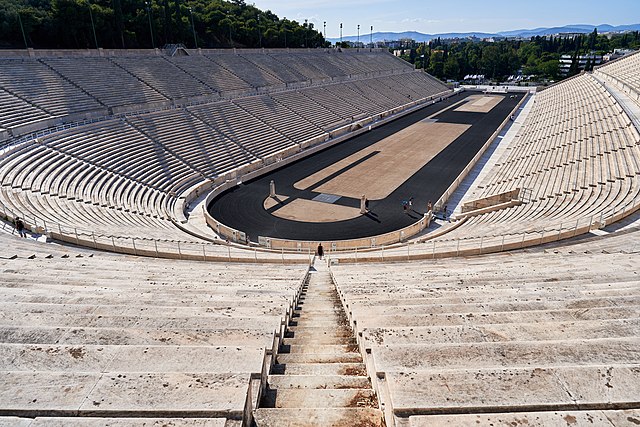
The Panathenaic Stadium is nothing short of spectacular – it is among the leading tourist attractions in Athens.
It is one of its kind – the only stadium in the world built entirely of marble. The stadium was constructed in 330 BC and rebuilt in 144 AD by an Athenian senator.
This stadium hosted the first modern Olympics in 1896. It also hosted the Olympics in 2004. It acts as the finishing point for the annual Athens Classic Marathon.
This is also the last venue in Greece where the Olympic flame handover ceremony to the host nation takes place.
9. Temple of Hera, Olympia
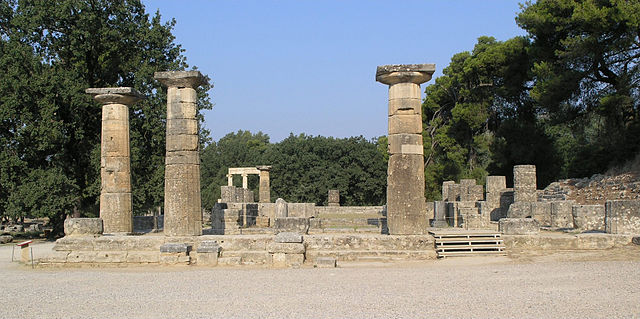
The Temple of Hera in Olympia is another Doric order temple. This temple, also known as Heraion, was built in honor of Zeus’s wife, Hera, the goddess of women and marriage.
However, it first belonged to both of them until a separate temple was built for Zeus. It is one of the oldest temples of Olympia.
This temple, built around 590 BC, has a single row of columns on all sides. The popular theory is that the pillars were replaced by stone due to the wood rotting out.
It measures 164.1 by 61.5 ft, which is longer and narrower than the typical architecture of the previous era.
10. Acropolis Museum
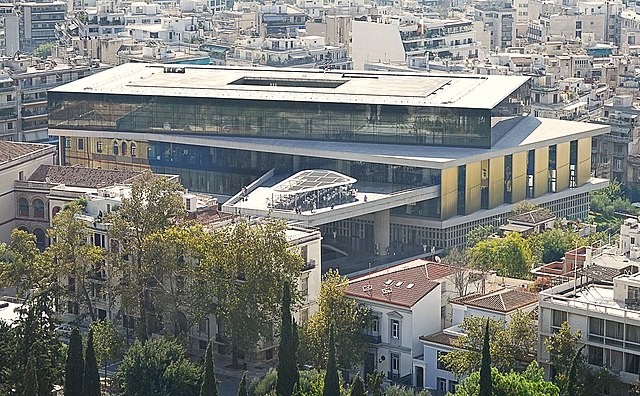
Visiting a museum is the best way to learn about a city and the Acropolis Museum is best place to learn about Greek history.
Rated as one of the best museums in the world, the Acropolis Museum was designed by Bernard Tschum and a local Greek architect called Michael Photiadis.
It’s dotted with ancient artefacts found in Acropolis and deconstructs how the Parthenon sculptures once looked. The museum’s frames feature olive trees propped by concrete pillars to reveal the archeological excavation below.
The best way to explore the museum is to start your journey from the top floor of Parthenon Gallery and make your way down. It’s on the third floor of the museum and has the most magnificent views.
It has similar dimensions to Parthenon, bringing the entire temple frieze on display. A walk further around, leads you to the three sculptural components of Parthenon- the frieze, the pediments (east and west), and the metopes.
The east pediment is perched atop the temple to depict the birth of Athena, the goddess, while the west denotes the mythological contest between Poseidon and Athena.
Metopes, on the other hand, depicts Greek mythology while the frieze was part of the Great Panathenaia, in honor of the goddess Athena. The museum offers guided tours with guides explaining various events and features. You may opt for a private tour too.

